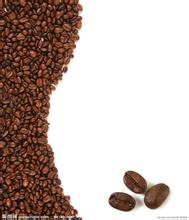A brief introduction to Indonesian Coffee one of the major coffee producers in New Guinea
The island of Sulawesi, located between Brneo and New Guinea, is sometimes called Celebes. The coffee produced on the island is full of grains and rich in flavor. The best coffee beans come from Kalossi and Rantepao in the southern part of the island. In many brands, try Celebes Carosi Coffee.
One of the main coffee producers in New Guinea is the Sigri plantation, whose products are the same as the overall style of archipelago coffee, full of particles and well balanced.
On the whole, Indonesian coffee has a strong flavor, mellow taste, slightly syrup flavor and excellent acidity, and its two main export markets are Germany and Japan, which reflects the excellent quality of the coffee. What attracts consumers is the unique quality of its Arabica coffee beans. You can add milk or cream to high-quality Indonesian coffee without worrying about affecting its taste. Indonesian coffee is divided into six grades, the best of which is AP. But no one is sure what these two capital letters stand for.
When ships replaced sailboats, the coffee produced in these islands faced the same problem as Indian coffee from Mysore-that is, consumers were used to coffee affected by long-distance travel, so they were reluctant to accept the taste of this "fresh" coffee. In order to solve this problem, the Indonesian government tried to copy coffee affected by long-distance travel. They stored the coffee beans for as long as a year. However, what is not satisfactory is that the taste of this wet-treated coffee is not so widely accepted that it affects the good reputation of its coffee.
However, Indonesia's "store" or "journey" coffee is still produced today. It is generally sold under the brands of "Old Government", "Old Brown" and "Old Java".
Although Indonesia produces so much admirable coffee, it is puzzling that local residents prefer Turkish coffee to its famous European coffee.

Important Notice :
前街咖啡 FrontStreet Coffee has moved to new addredd:
FrontStreet Coffee Address: 315,Donghua East Road,GuangZhou
Tel:020 38364473
- Prev

What is the price of Kopi Luwak? what is Kopi Luwak?
The coffee comes from the excrement of an animal called the civet (commonly known as the civet in Indonesia). Although it comes from smelly poop, it is full of sweetness and a burst of indescribable sweetness. This wild musk cat likes to eat fat, pulpy coffee fruit, but the hard hard nut (raw bean) cannot be digested. It is excreted with feces and becomes Kop after cleaning.
- Next

Coffee trees in Papua New Guinea are growing vigorously.
The government's response is to establish a new level of quality, temporarily suspend the production of coffee such as Y, and no longer implement the policy of one grade and one price. This allows buyers to price according to quality, which is bound to have an impact on the income of farmers who produce shoddy coffee beans. By 1993, the quality problem had been basically solved. Most regular customers are buying coffee from Papua New Guinea again. Y Coffee
Related
- Does Rose Summer choose Blue, Green or Red? Detailed explanation of Rose Summer Coffee plots and Classification in Panamanian Jade Manor
- What is the difference between the origin, producing area, processing plant, cooperative and manor of coffee beans?
- How fine does the espresso powder fit? how to grind the espresso?
- Sca coffee roasting degree color card coffee roasting degree 8 roasting color values what do you mean?
- The practice of lattes: how to make lattes at home
- Introduction to Indonesian Fine Coffee beans-- Java Coffee producing area of Indonesian Arabica Coffee
- How much will the flavor of light and medium roasted rose summer be expressed? What baking level is rose summer suitable for?
- Introduction to the characteristics of washing, sun-drying or wet-planing coffee commonly used in Mantenin, Indonesia
- Price characteristics of Arabica Coffee Bean Starbucks introduction to Manning Coffee Bean Taste producing area Variety Manor
- What is the authentic Yega flavor? What are the flavor characteristics of the really excellent Yejasuffi coffee beans?

